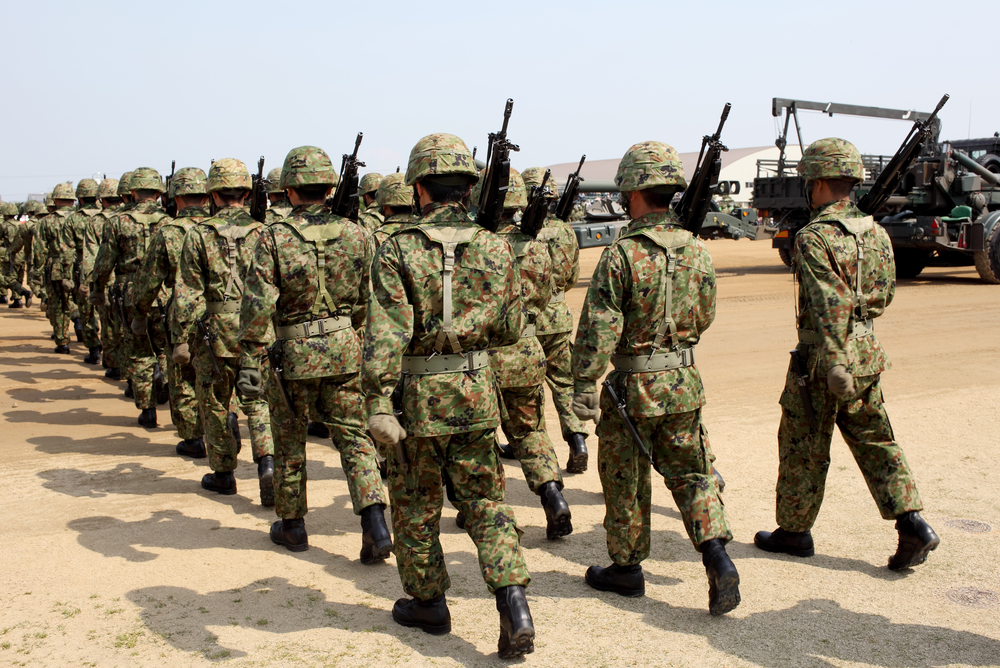Japan’s Abe Battles Interpretation in Setting New Self-Defense Guidelines

Please note that we are not authorised to provide any investment advice. The content on this page is for information purposes only.
On 1 July 2014, the cabinet of Prime Minister Shinzo Abe issued a decision reinterpreting the Japanese constitution’s Article 9 ‘peace clause’ to allow the country to exercise collective self-defence — the right to use force to aid an ally under attack. Despite overturning decades of government interpretations, many observers have highlighted that the new interpretation has important limits.
On 1 July 2014, the cabinet of Prime Minister Shinzo Abe issued a decision reinterpreting the Japanese constitution’s Article 9 ‘peace clause’ to allow the country to exercise collective self-defence — the right to use force to aid an ally under attack. Despite overturning decades of government interpretations, many observers have highlighted that the new interpretation has important limits. Japan may only exercise the right to collective self-defence when an attack on an ally is deemed to pose a clear existential threat to Japan’s security and the lives and liberties of its citizens. But the extent to which the new interpretation will impact actual security practices will only become clear once accompanying legislation passes the Diet.
In mid-February 2015, Abe’s Liberal Democratic Party (LDP) and its coalition partner, Komeito, began negotiating this legislation. The negotiations address a broad set of issues, some of which are in the July cabinet decision. In particular, the LDP has made a number of demands based on maximal interpretations of the cabinet decision’s language. If implemented, the LDP proposals would effectively eliminate geographical limitations on deployments of Japan’s Self-Defense Forces (SDF) and allow the SDF to aid countries under attack besides the US (Japan’s only formal alliance partner). They would also establish a permanent dispatch law that would allow the prime minister to send Japanese forces abroad on missions not involving the direct use of force (that is so-called ‘rear area support’).
Other important issues on the agenda include whether the prime minister can deploy troops overseas without prior Diet approval and the scope of the new interpretation’s conditions allowing the use of force, especially whether economic harm caused by a third party is sufficient grounds for exercising the right to collective self-defence.
Komeito, a small party associated with the pacifist Buddhist organisation Soka Gakkai, has raised objections to many of these proposals. Although the sides now seem near an agreement on basic principles, working out important details remains when drafting legislation later in the year.
Several factors will likely complicate the process from here.
First, Komeito picked up seats in the December 2014 lower house election and demonstrated that its voters’ support for LDP candidates in single-member districts remains crucial to the LDP’s electoral success. The election devastated small conservative parties, like the Party for Future Generations and Your Party, whose support for the legislative changes could have been used by the LDP to pressure its small coalition partner. This should strengthen Komeito’s hand in the negotiations. It may also explain the LDP’s strategy of starting with maximal demands in order to get as much as possible from negotiations. But the degree to which Komeito can, by itself, serve as a brake on the proposed legislative changes should not be overstated.
Second, virtually all the LDP’s proposals are unpopular with the Japanese public. Abe has already delayed his legislative plans twice in response to public opposition. Opposition parties that oppose some or all of these proposals, such as the Democratic Party of Japan and Japan Communist Party, picked up seats in the last election. This will likely encourage them to aggressively state their objections in Diet deliberations, thus fanning the flames of public opinion.
While the ruling coalition retained a comfortable majority in the last election, the LDP actually lost seats. Both the media and voters questioned Abe’s decision to call a snap election. And voter turnout hit a historic low. Abe is also facing a recent series of campaign finance scandals in his cabinet. The prime minister may start to receive pressure from within his own party to delay unpopular legislative moves. If Abe pushes ahead on collective self-defence in the face of falling approval ratings, he could tempt serious challengers to enter the 2015 LDP presidential election.
Third, implementing collective self-defence also conflicts with Abe’s attempts to improve relations with China and South Korea, both of which have objected to Japan’s proposed security policy changes. Abe’s decision to draft a new prime minister’s statement commemorating the 70th anniversary of the end of World War II highlights this conflict. Abe has recently tried to improve relations in the region. But, in the past, he has questioned the negative characterisation of Japan’s pre-war actions expressed in existing government statements. If Japan passes legislation that greatly expands the role of Japan’s SDF in regional security, and the perception that Abe’s anniversary statement is whitewashing Japan’s past aggression, it will almost certainly increase tensions in the region.
To avoid this, Abe at the very least needs to overcome a severe shortcoming in his collective self-defence policies to date: the failure to offer sufficient assurances to Japan’s neighbours that the proposed changes will not negatively affect their own security. Continuing to pursue these changes in the absence of firm assurances will aggravate tensions in the region, and may undermine any security benefits from collective self-defence.
The perils of legislating Abe’s collective self-defence is republished with permission from East Asia Forum




